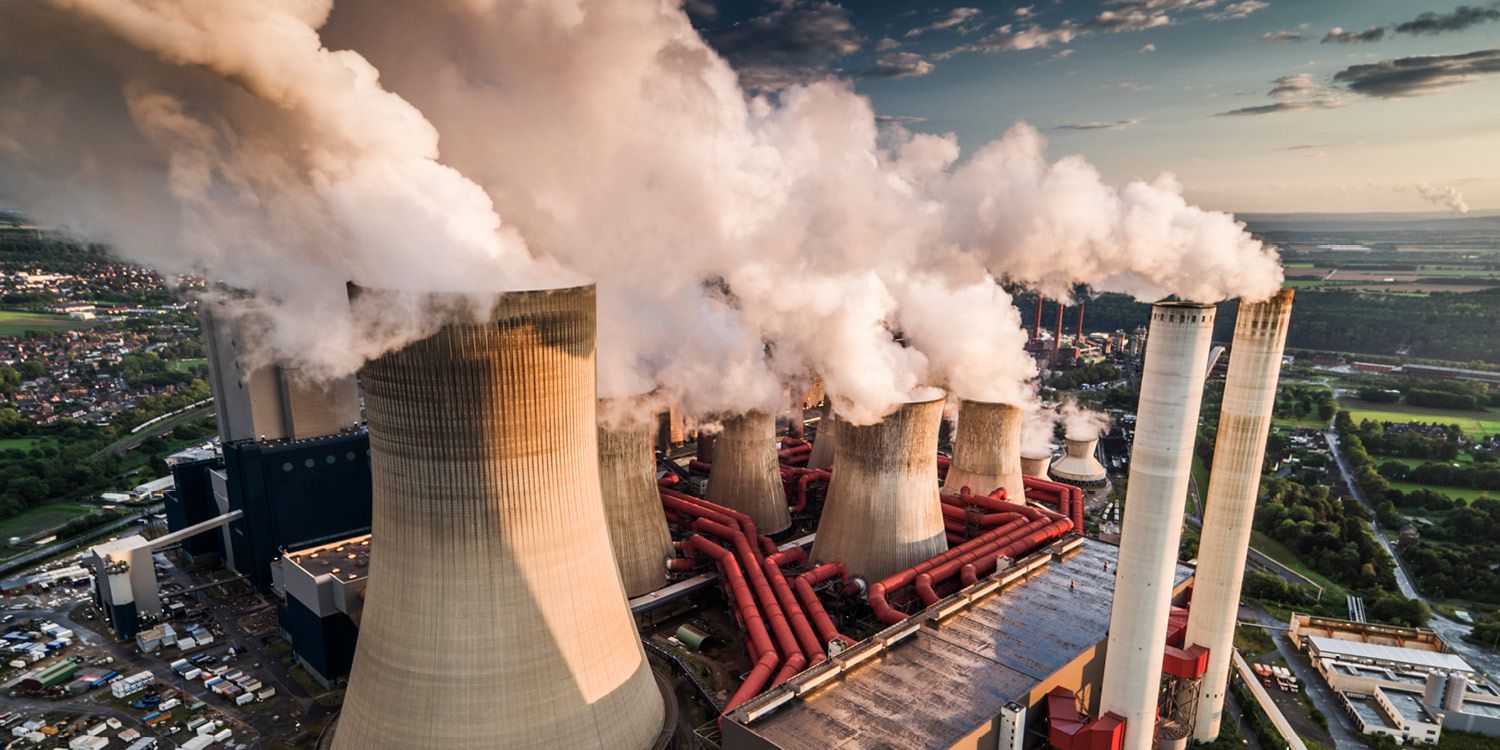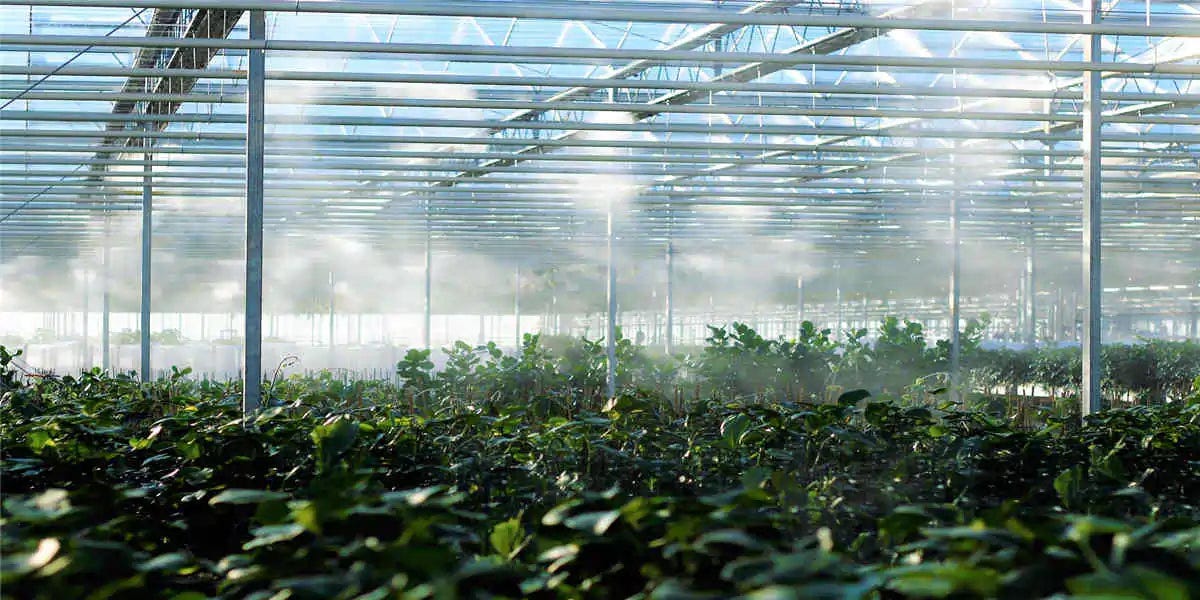Home>Gardening News and Trends>Which Causes An Increase In Greenhouse Gases


Gardening News and Trends
Which Causes An Increase In Greenhouse Gases
Modified: January 22, 2024
Stay updated with the latest news on the causes of increasing greenhouse gases and their impact on the environment.
(Many of the links in this article redirect to a specific reviewed product. Your purchase of these products through affiliate links helps to generate commission for Chicagolandgardening.com, at no extra cost. Learn more)
Table of Contents
Introduction
As concern over climate change and its impact on the environment continues to grow, the role of greenhouse gases in contributing to global warming has come into sharp focus. Greenhouse gases are gases that trap heat in the Earth’s atmosphere, leading to the greenhouse effect and subsequent rise in global temperatures. While greenhouse gases exist naturally in the atmosphere, human activities have significantly increased their concentration, leading to an imbalance and amplification of their warming effect.
This article will explore the various causes of the increase in greenhouse gases, highlighting the activities and processes that contribute to their emissions. From deforestation to industrial processes, agricultural activities to land use changes, and transportation emissions, each factor plays a significant role in exacerbating the greenhouse effect. By understanding these causes, we can take steps to mitigate their impact and work towards a more sustainable and environmentally-friendly future.
It is important to note that while greenhouse gas emissions are a global issue, the extent of their impact can vary across different regions and countries. Factors such as population size, economic activities, and policy measures all contribute to the overall emissions levels of a particular area. Therefore, a comprehensive approach that encompasses both global and local strategies is necessary to address the issue effectively.
Now, let’s delve into each cause in detail, examining the specific activities and processes that contribute to the increase in greenhouse gases and their impact on the environment.
Deforestation and Greenhouse Gases
Deforestation, the clearing of forests for various purposes such as agriculture, logging, and urbanization, is a significant contributor to the increase in greenhouse gases. Trees play a vital role in regulating the Earth’s climate by absorbing carbon dioxide (CO2) during photosynthesis and storing it in their biomass. When forests are cleared, either through slash-and-burn practices or permanent deforestation, the stored carbon is released back into the atmosphere in the form of CO2, contributing to greenhouse gas emissions.
The loss of forests not only releases CO2 but also reduces the Earth’s capacity to absorb future emissions. It disrupts the balance of the carbon cycle, leading to an accumulation of greenhouse gases in the atmosphere and amplifying the greenhouse effect. Additionally, the destruction of forest ecosystems results in the loss of biodiversity and the disruption of natural habitats.
Deforestation occurs primarily in tropical regions, where the demand for agricultural land is high. The expansion of agricultural activities, such as soybean and palm oil production, often drives deforestation in these areas. Logging for timber and the extraction of other natural resources also contribute to forest loss.
To address the issue of deforestation and its impact on greenhouse gas emissions, various strategies have been developed. These include the implementation of sustainable forest management practices, the establishment of protected areas, and the promotion of reforestation and afforestation projects. International efforts, such as REDD+ (Reducing Emissions from Deforestation and Forest Degradation), aim to provide financial incentives to developing countries to preserve their forests and reduce emissions.
Overall, deforestation is a significant driver of greenhouse gas emissions, contributing to global warming and climate change. It is essential to prioritize sustainable land-use practices and the conservation of forests to combat the increase in greenhouse gases and protect the environment for future generations.
Fossil Fuels and Greenhouse Gas Emissions
Fossil fuels, such as coal, oil, and natural gas, are the primary sources of energy for industrial processes, transportation, and electricity generation. However, the combustion of these fuels releases significant amounts of greenhouse gases into the atmosphere, contributing to global warming and climate change.
When fossil fuels are burned, carbon dioxide (CO2) is released as a byproduct. CO2 is a potent greenhouse gas that traps heat in the Earth’s atmosphere, causing a rise in temperatures. The burning of coal, in particular, is a major contributor to CO2 emissions, as it is the most carbon-intensive fossil fuel.
In addition to CO2, the burning of fossil fuels also releases other greenhouse gases, such as methane (CH4) and nitrous oxide (N2O). Methane is released during the extraction and transport of coal, oil, and natural gas. It is also emitted by livestock and other agricultural practices. Methane is a potent greenhouse gas, with a warming potential much higher than CO2 over a shorter period. Nitrous oxide is primarily produced by agricultural and industrial activities, as well as the combustion of fossil fuels.
To combat the increase in greenhouse gas emissions from fossil fuels, various strategies have been proposed and implemented. These include transitioning to renewable energy sources, such as wind, solar, and hydroelectric power, which do not produce greenhouse gas emissions during operation. Improving energy efficiency and promoting energy conservation are also effective ways to reduce reliance on fossil fuels.
The adoption of cleaner technologies, such as carbon capture and storage (CCS), can also help mitigate the impact of fossil fuel emissions. CCS involves capturing CO2 emissions from power plants and industrial facilities and storing them underground or repurposing them for industrial use. This technology has the potential to significantly reduce CO2 emissions from fossil fuel combustion.
It is crucial to transition away from fossil fuels and towards cleaner and more sustainable energy sources to reduce greenhouse gas emissions and mitigate the effects of climate change. By investing in renewable energy and implementing effective policies and regulations, we can move towards a low-carbon economy and a more sustainable future.
Industrial Processes and Greenhouse Gas Emissions
Industrial processes play a significant role in contributing to greenhouse gas emissions. From manufacturing to chemical production, these processes release various greenhouse gases into the atmosphere, exacerbating the greenhouse effect and global warming.
One of the primary contributors to industrial greenhouse gas emissions is the production of cement. The manufacturing of cement involves the calcination of limestone, a process that releases carbon dioxide (CO2) as a byproduct. Cement production is responsible for approximately 8% of global CO2 emissions.
Another significant source of greenhouse gas emissions is the production of steel and other metals. The extraction of iron ore and subsequent smelting in blast furnaces release CO2. Additionally, the use of coal and coke as fuels in the metal production process further contributes to greenhouse gas emissions.
Chemical manufacturing processes, including the production of plastics, fertilizers, and various industrial chemicals, also emit greenhouse gases. Many chemical reactions used in these processes release CO2 or other greenhouse gases as byproducts. The use of fossil fuels in these industries further adds to their emissions.
Furthermore, industrial activities contribute to emissions of other potent greenhouse gases, such as hydrofluorocarbons (HFCs) and perfluorocarbons (PFCs). These gases are used in various industrial applications, including refrigeration, air conditioning, and electronics manufacturing. Although their quantities in the atmosphere are relatively small compared to CO2, their global warming potentials are significantly higher.
To address the issue of greenhouse gas emissions from industrial processes, several strategies can be employed. Implementation of cleaner production techniques, such as adopting energy-efficient technologies and optimizing manufacturing processes, can reduce emissions. The use of renewable energy sources and carbon capture and storage (CCS) technology can also play a significant role in mitigating emissions from these industries.
Additionally, efforts to promote circular economy practices, such as recycling and waste management, can reduce the demand for new raw materials and the associated emissions from extraction and production processes.
By implementing these strategies and encouraging sustainable industrial practices, we can reduce greenhouse gas emissions from industrial processes and minimize their impact on climate change.
Agricultural Activities and Greenhouse Gas Emissions
Agricultural activities, including livestock rearing and crop production, are significant contributors to greenhouse gas emissions. These activities release various greenhouse gases, such as methane (CH4) and nitrous oxide (N2O), into the atmosphere, contributing to global warming and climate change.
Livestock agriculture, particularly the rearing of ruminant animals like cattle, sheep, and goats, is a significant source of methane emissions. Ruminant animals have a specialized digestive system that produces methane during the process of enteric fermentation. Methane is released as a byproduct of microbial digestion in the animal’s stomach, and it is then emitted through belching and flatulence. The global livestock sector is responsible for approximately 14.5% of all human-induced methane emissions.
In addition to methane emissions from ruminant animals, agricultural activities also contribute to nitrous oxide emissions. Nitrous oxide is released from agricultural soils as a result of microbial processes, such as nitrification and denitrification. It is primarily emitted through the use of synthetic fertilizers, as well as manure management practices. Nitrous oxide has a much higher warming potential compared to other greenhouse gases.
Furthermore, the conversion of natural lands for agricultural purposes, such as the clearing of forests and wetlands, leads to the release of stored carbon dioxide (CO2) into the atmosphere. This land-use change contributes to greenhouse gas emissions and reduces the capacity of the land to sequester CO2.
To reduce greenhouse gas emissions from agricultural activities, various strategies can be implemented. Improved livestock management practices, such as dietary supplements and the use of feed additives, can help reduce methane emissions from ruminant animals. Sustainable farming techniques, such as precision agriculture and organic farming, can also mitigate emissions and promote carbon sequestration in soils.
Additionally, the adoption of efficient irrigation systems and the reduction of synthetic fertilizer use can help minimize nitrous oxide emissions from agricultural soils. Integrated crop-livestock systems and agroforestry practices can also contribute to carbon sequestration and improve overall sustainability in the agricultural sector.
By implementing these measures and promoting sustainable agricultural practices, we can mitigate greenhouse gas emissions from agricultural activities and work towards a more environmentally-friendly and resilient food production system.
Land Use Changes and Greenhouse Gas Emissions
Land use changes, such as deforestation, urbanization, and conversion of natural habitats for agricultural purposes, have a significant impact on greenhouse gas emissions. These changes in land cover contribute to the release of stored carbon dioxide (CO2) into the atmosphere, leading to an increase in greenhouse gas concentrations.
Deforestation, as mentioned earlier, is a key factor in land use changes and greenhouse gas emissions. When forests are cleared for agriculture, logging, or urban development, the carbon stored in trees and vegetation is released back into the atmosphere as CO2. The loss of forests not only contributes to higher CO2 emissions but also reduces the Earth’s capacity to absorb future emissions through photosynthesis.
Urbanization and the expansion of cities also lead to increased greenhouse gas emissions. As urban areas grow, more land is taken up for buildings, roads, and infrastructure, resulting in the loss of natural vegetation. This leads to reduced carbon sequestration and increased emissions from transportation, energy consumption, and industrial activities within urban areas.
Agricultural expansion, particularly for monoculture cropping and large-scale farming, contributes to land use changes and greenhouse gas emissions. Conversion of natural habitats, such as grasslands and wetlands, into agricultural land disrupts the balance of carbon cycling and releases stored carbon into the atmosphere. Furthermore, the use of synthetic fertilizers and intensive farming practices can lead to increased emissions of nitrous oxide (N2O), a potent greenhouse gas.
To address the impacts of land use changes on greenhouse gas emissions, various strategies can be implemented. Protecting and restoring natural habitats, such as forests and wetlands, helps to maintain their carbon sequestration capacity and prevent the release of stored carbon. Sustainable land management practices, such as agroforestry and reforestation programs, can also contribute to carbon sequestration and reduce emissions.
Additionally, promoting smarter land-use planning in urban areas, such as compact development, green spaces, and efficient public transportation systems, can help mitigate emissions from urbanization. Encouraging sustainable agricultural practices, such as agroecology and organic farming, reduces the need for land conversion and minimizes greenhouse gas emissions from the agricultural sector.
By adopting these measures and prioritizing sustainable land management, we can mitigate the impact of land use changes on greenhouse gas emissions and promote the preservation of natural landscapes.
Transportation and Greenhouse Gas Emissions
Transportation is a significant contributor to greenhouse gas emissions, with the burning of fossil fuels in vehicles being a primary source of carbon dioxide (CO2) emissions. The reliance on fossil-fueled transportation, such as cars, trucks, airplanes, and ships, has led to a substantial increase in greenhouse gas concentrations in the atmosphere.
The combustion of gasoline and diesel fuels in vehicles releases CO2, contributing to the greenhouse effect. The transportation sector is a major source of CO2 emissions globally, and its emissions continue to rise due to increasing demands for travel and trade.
In addition to CO2 emissions, transportation also contributes to the release of other greenhouse gases. For example, the burning of aviation fuel results in the emission of pollutants, including nitrogen oxides (NOx) and particulate matter, which have warming effects. Ships powered by heavy fuel oil also release sulfur dioxide (SO2), a greenhouse gas with detrimental environmental impacts.
Transportation emissions are influenced by multiple factors, including the type of vehicle, fuel efficiency, and travel distance. The increasing popularity of larger vehicles, such as SUVs and trucks, has led to higher emissions due to their lower fuel efficiency compared to smaller cars. Additionally, long-haul flights and shipping routes contribute to emissions through the burning of large quantities of fuel.
To reduce greenhouse gas emissions from the transportation sector, various strategies can be implemented. The transition to low-emission or zero-emission vehicles, such as electric cars and public transportation systems, is a key initiative. Improving fuel efficiency standards and promoting the use of alternative fuels, such as biofuels and hydrogen, also play significant roles in reducing emissions.
Furthermore, increasing the adoption of sustainable transportation practices, such as carpooling, cycling, and walking, can help reduce the number of vehicles on the road and minimize emissions. Enhancing public transportation infrastructure and encouraging the use of mass transit systems can also contribute to lower emissions by reducing the dependence on private vehicles.
Smart urban planning, which focuses on mixed land-use development and compact cities, can help reduce the need for long-distance travel and promote more sustainable transportation options. Additionally, improving logistics and optimizing shipping routes and practices can result in more efficient and greener transportation of goods worldwide.
By implementing these measures and promoting sustainable transportation solutions, we can significantly reduce greenhouse gas emissions from the transportation sector and move towards a more environmentally-friendly and sustainable future.
Conclusion
The increase in greenhouse gas emissions is a pressing issue that contributes to global warming and climate change. Understanding the various causes of these emissions is crucial in formulating effective mitigation strategies. From deforestation and land use changes to the burning of fossil fuels in transportation and industrial processes, each activity plays a significant role in exacerbating the greenhouse effect.
Deforestation leads to the release of stored carbon dioxide (CO2) into the atmosphere, while land use changes disrupt the balance of the carbon cycle. The burning of fossil fuels, such as coal, oil, and natural gas, releases CO2 along with other greenhouse gases, contributing to global warming. Industrial processes and agricultural activities, including livestock farming and monoculture cropping, emit methane and nitrous oxide, further amplifying the greenhouse effect.
To address these issues, countries and organizations need to prioritize sustainable land management, afforestation, and reforestation efforts. Transitioning to renewable energy sources and improving energy efficiency can help reduce greenhouse gas emissions from industrial and transportation sectors. Sustainable agricultural practices, such as organic farming and improved livestock management, can mitigate emissions from the agricultural sector.
Promoting smart urban planning and sustainable transportation solutions, alongside encouraging the use of public transportation and electric vehicles, can help reduce emissions from the transport sector. Furthermore, the adoption of cleaner technologies, such as carbon capture and storage (CCS), can aid in the reduction of emissions from high-emitting industries.
While the task of reducing greenhouse gas emissions may seem daunting, concerted global efforts and individual actions can make a significant difference. Governments, businesses, and individuals all have a role to play in transitioning to a low-carbon economy and mitigating the effects of climate change. By understanding the causes and consequences of greenhouse gas emissions, we can work together towards a more sustainable and environmentally-friendly future for generations to come.






